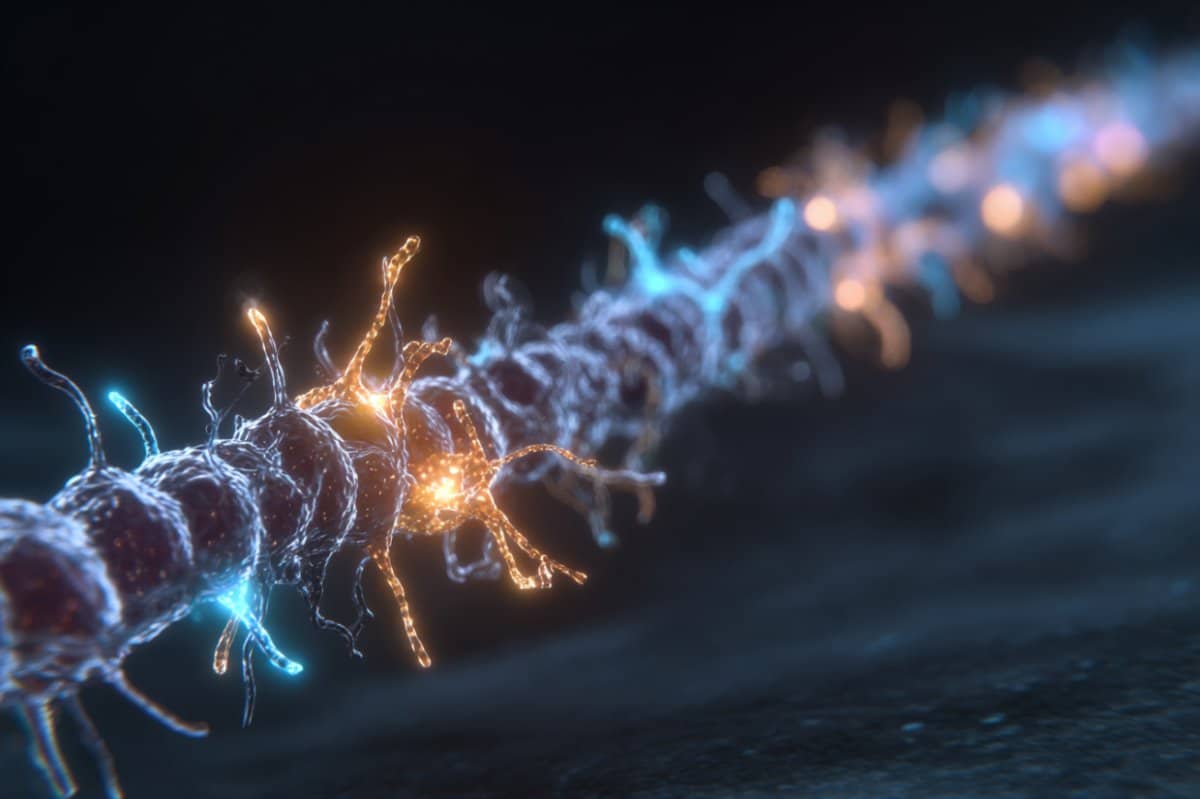Summary: An international research team has mapped the millisecond-by-millisecond process by which nerve signals activate muscles, uncovering a previously unseen “primed” intermediate step. This breakthrough reveals that neuromuscular receptors move asynchronously—not in perfect unison as scientists long believed—redefining how communication between nerves and muscles is understood.
Using single-molecule imaging, researchers captured atomic-level structures of the nicotinic acetylcholine receptor as it transitions from resting to active states. The discovery could pave the way for precision drugs that treat muscle-weakening diseases like congenital myasthenic syndrome.
Key Facts:
- New ‘Primed’ State Identified: Researchers uncovered a missing intermediate step in how neurotransmitter receptors activate muscle fibers.
- Rewriting a 50-Year Model: The team found that receptor components move asynchronously, overturning decades of scientific assumptions.
- Therapeutic Promise: Insights may guide the design of new drugs targeting neuromuscular and neurodegenerative disorders.
Source: University of Ottawa
An international research team led by a uOttawa Faculty of Medicine investigator has revealed ultra-detailed intricacies in how nerve signals activate at the neuromuscular junction – a specialized synapse that connects motor neurons to skeletal muscle fibers.
The team’s discovery offers a groundbreaking look at how neuromuscular signals are communicated on the millisecond time scale, findings that could have wide-reaching implications for our understanding of the interplay between nerves and muscle throughout the body.

This new knowledge could also potentially help scientists design drugs for a group of muscle-weakening conditions resulting from disease-causing mutations.
Published in the high-impact journal Science, the collaborative team led by uOttawa Faculty of Medicine professor Dr. John Baenziger used cutting-edge “single molecule” techniques to capture several atomic resolution structures of a neurotransmitter receptor along its activation pathway.
Ultimately, the collaborators ended up capturing a missing link —an intermediate “primed” state that helps define communication between nerves and muscles.
“This new intermediate structure, called a primed state, is extremely important because it plays a critical role shaping neuromuscular communication,” says Dr. Baenziger, senior author of the newly published paper.
“Our study provides the first glimpse into this key intermediate along the activation pathway – in particular, the step called priming.”
Dr. Baenziger says that as similar protein receptors are found in the brain, this “new insight impacts broadly on our understanding of communication at neuronal synapses.”
The innovative new study and its atomic-level insights dispel a scientific myth that’s been assumed for decades, according to Dr. Baenziger.
He explains that for well over 50 years, it’s been assumed that these protein receptors are activated by a phenomenon called “concerted conformational transition.”
In thisprotein-changing event, all parts of the protein were understood to move together synchronously leading to a final activated state.The concerted conformational transition framework has ultimately been used to try to understand how disease-causing mutations or different drugs modulate function.
But in this major research publication, the team reveals this is “absolutely not true,” Dr. Baenziger says.
Their hard-won research reveals that, in fact, individual components of the protein receptor move asynchronously – meaning some parts move first while others move later.
“This information will be critical to understanding how disease-causing mutations and different drugs modulate neuromuscular communication – information that should ultimately lead to better drugs to treat congenital myasthenic syndrome and other diseases resulting from impaired synaptic communication.”
Dr. Baenziger’s dynamic lab at the uOttawa Faculty of Medicine is focused on understanding how a protein neurotransmitter receptor, the “nicotinic acetylcholine receptor” (nAChR), shapes communication at the neuromuscular junction.
This receptor is an important member of a family of proteins that has been studied widely, in large part because understanding its function can help unlock treatment paths for neurological and neurodegenerative disorders.
Now, armed with this new study’s findings, he and the collaborative team hope to fully understand how nAChR function is influenced in the context of this model of activation. The research team will seek to solve structures of this receptor that harbor disease causing mutations and gauge how they react in the presence of different drugs.
“We will want to use these new structures as templates to design better therapeutics,” says Dr. Baenziger, a full professor in the Faculty’s Department of Biochemistry, Microbiology and Immunology.
The new structures were solved by first author Dr. Mackenzie Thompson, who until recently was a PhD student in Dr. Baenziger’s lab and who is now a post-doctoral researcher at University of California, Berkeley.
The team also included close coordination with Drs. Hugues Nury and Elefterios Zarkadas, both at the Institute of Structural Biology – a research institution in Grenoble, France, where Dr. Baenziger has cultivated fruitful collaborations. uOttawa’s Dr. Corrie daCosta in the Faculty of Science also played a major role, bringing sophisticated single-molecule functional experiments into the study.
About this neuroscience research news
Author: Paul Logothetis
Source: University of Ottawa
Contact: Paul Logothetis – University of Ottawa
Image: The image is credited to Neuroscience News
Original Research: Closed access.
“Asynchronous subunit transitions prime acetylcholine receptor activation” by John Baenziger et al. Science
Abstract
Asynchronous subunit transitions prime acetylcholine receptor activation
Communication at synapses is facilitated by postsynaptic receptors, which convert a chemical signal into an electrical response.
For ligand-gated ion channels, agonist binding triggers rapid transitions through intermediate states leading to a transient open-pore conformation, with these transitions shaping the post-synaptic response.
Here, we determine structures of the muscle-type nicotinic acetylcholine receptor in unliganded, mono-liganded, and di-liganded states.
Agonist binding to a single site stabilizes a closed structure where an entire principal agonist-binding subunit transitions to an active-like conformation, while the other unoccupied principal subunit remains inactive, albeit poised for activation.
Uniting this intermediate structure with single-channel recordings informs a sequential activation mechanism where asynchronous subunit transitions prime the receptor for activation, a finding with implications for an entire superfamily of pentameric ligand-gated ion channels.
